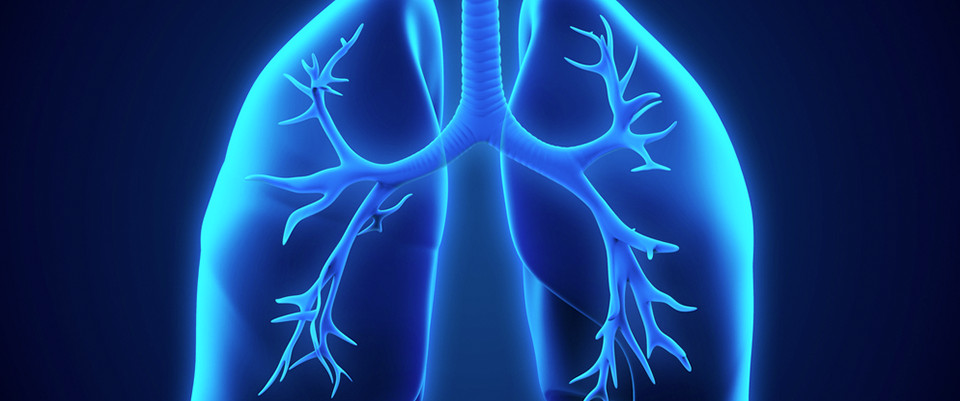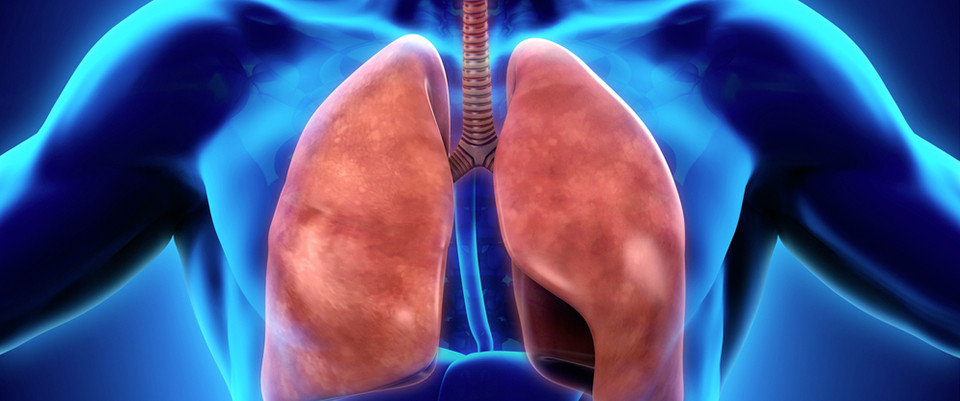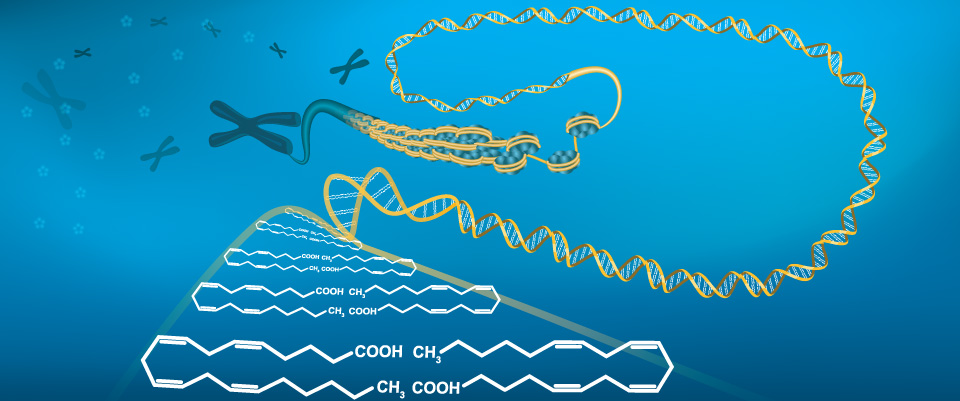PubMed
Comprehensive quality evaluation and comparison of Angelica sinensis radix and Angelica acutiloba radix by integrated metabolomics and glycomics.
Related Articles
Comprehensive quality evaluation and comparison of Angelica sinensis radix and Angelica acutiloba radix by integrated metabolomics and glycomics.
J Food Drug Anal. 2018 Jul;26(3):1122-1137
Authors: Zhou SS, Xu J, Tsang CK, Yip KM, Yeung WP, Zhao ZZ, Zhu S, Fushimi H, Chang HY, Chen HB
Abstract
Angelica radix (Danggui in Chinese) used in China and Japan is derived from two species of Angelica, namely Angelica sinensis and Angelica acutiloba, respectively. The differences in quality between A. sinensis radix (ASR) and A. acutiloba radix (AAR) should be therefore investigated to guide the medicinal and dietary applications of these two species. Secondary metabolites and carbohydrates have been demonstrated to be the two major kinds of bioactive components of Danggui. However, previously, quality comparison between ASR and AAR intensively concerned secondary metabolites but largely overlooked carbohydrates, thus failing to include or take into consideration an important aspect of the holistic quality of Danggui. In this study, untargeted/targeted metabolomics and glycomics were integrated by multiple chromatography-based analytical techniques for qualitative and quantitative characterization of secondary metabolites and carbohydrates in Danggui so as to comprehensively evaluate and compare the quality of ASR and AAR. The results revealed that not only secondary metabolites but also carbohydrates in ASR and AAR were different in type and amount, which should collectively contribute to their quality difference. By providing more comprehensive chemical information, the research results highlighted the need to assess characteristics of both carbohydrates and secondary metabolites for overall quality evaluation and comparison of ASR and AAR.
PMID: 29976405 [PubMed - in process]
A multi-omics approach reveals function of Secretory Carrier-Associated Membrane Proteins in wood formation of Populus trees.
Related Articles
A multi-omics approach reveals function of Secretory Carrier-Associated Membrane Proteins in wood formation of Populus trees.
BMC Genomics. 2018 01 03;19(1):11
Authors: Obudulu O, Mähler N, Skotare T, Bygdell J, Abreu IN, Ahnlund M, Latha Gandla M, Petterle A, Moritz T, Hvidsten TR, Jönsson LJ, Wingsle G, Trygg J, Tuominen H
Abstract
BACKGROUND: Secretory Carrier-Associated Membrane Proteins (SCAMPs) are highly conserved 32-38 kDa proteins that are involved in membrane trafficking. A systems approach was taken to elucidate function of SCAMPs in wood formation of Populus trees. Phenotypic and multi-omics analyses were performed in woody tissues of transgenic Populus trees carrying an RNAi construct for Populus tremula x tremuloides SCAMP3 (PttSCAMP3; Potri.019G104000).
RESULTS: The woody tissues of the transgenic trees displayed increased amounts of both polysaccharides and lignin oligomers, indicating increased deposition of both the carbohydrate and lignin components of the secondary cell walls. This coincided with a tendency towards increased wood density as well as significantly increased thickness of the suberized cork in the transgenic lines. Multivariate OnPLS (orthogonal projections to latent structures) modeling of five different omics datasets (the transcriptome, proteome, GC-MS metabolome, LC-MS metabolome and pyrolysis-GC/MS metabolome) collected from the secondary xylem tissues of the stem revealed systemic variation in the different variables in the transgenic lines, including changes that correlated with the changes in the secondary cell wall composition. The OnPLS model also identified a rather large number of proteins that were more abundant in the transgenic lines than in the wild type. Several of these were related to secretion and/or endocytosis as well as both primary and secondary cell wall biosynthesis.
CONCLUSIONS: Populus SCAMP proteins were shown to influence accumulation of secondary cell wall components, including polysaccharides and phenolic compounds, in the woody tissues of Populus tree stems. Our multi-omics analyses combined with the OnPLS modelling suggest that this function is mediated by changes in membrane trafficking to fine-tune the abundance of cell wall precursors and/or proteins involved in cell wall biosynthesis and transport. The data provides a multi-level source of information for future studies on the function of the SCAMP proteins in plant stem tissues.
PMID: 29298676 [PubMed - indexed for MEDLINE]
Role of omics techniques in the toxicity testing of nanoparticles.
Related Articles
Role of omics techniques in the toxicity testing of nanoparticles.
J Nanobiotechnology. 2017 Nov 21;15(1):84
Authors: Fröhlich E
Abstract
Nanotechnology is regarded as a key technology of the twenty-first century. Despite the many advantages of nanotechnology it is also known that engineered nanoparticles (NPs) may cause adverse health effects in humans. Reports on toxic effects of NPs relay mainly on conventional (phenotypic) testing but studies of changes in epigenome, transcriptome, proteome, and metabolome induced by NPs have also been performed. NPs most relevant for human exposure in consumer, health and food products are metal, metal oxide and carbon-based NPs. They were also studied quite frequently with omics technologies and an overview of the study results can serve to answer the question if screening for established targets of nanotoxicity (e.g. cell death, proliferation, oxidative stress, and inflammation) is sufficient or if omics techniques are needed to reveal new targets. Regulated pathways identified by omics techniques were confirmed by phenotypic assays performed in the same study and comparison of particle types and cells by the same group indicated a more cell/organ-specific than particle specific regulation pattern. Between different studies moderate overlap of the regulated pathways was observed and cell-specific regulation is less obvious. The lack of standardization in particle exposure, in omics technologies, difficulties to translate mechanistic data to phenotypes and comparison with human in vivo data currently limit the use of these technologies in the prediction of toxic effects by NPs.
PMID: 29157261 [PubMed - indexed for MEDLINE]
Temporal fluxomics reveals oscillations in TCA cycle flux throughout the mammalian cell cycle.
Related Articles
Temporal fluxomics reveals oscillations in TCA cycle flux throughout the mammalian cell cycle.
Mol Syst Biol. 2017 Nov 06;13(11):953
Authors: Ahn E, Kumar P, Mukha D, Tzur A, Shlomi T
Abstract
Cellular metabolic demands change throughout the cell cycle. Nevertheless, a characterization of how metabolic fluxes adapt to the changing demands throughout the cell cycle is lacking. Here, we developed a temporal-fluxomics approach to derive a comprehensive and quantitative view of alterations in metabolic fluxes throughout the mammalian cell cycle. This is achieved by combining pulse-chase LC-MS-based isotope tracing in synchronized cell populations with computational deconvolution and metabolic flux modeling. We find that TCA cycle fluxes are rewired as cells progress through the cell cycle with complementary oscillations of glucose versus glutamine-derived fluxes: Oxidation of glucose-derived flux peaks in late G1 phase, while oxidative and reductive glutamine metabolism dominates S phase. These complementary flux oscillations maintain a constant production rate of reducing equivalents and oxidative phosphorylation flux throughout the cell cycle. The shift from glucose to glutamine oxidation in S phase plays an important role in cell cycle progression and cell proliferation.
PMID: 29109155 [PubMed - indexed for MEDLINE]
Comparative metabolomics elucidates postprandial metabolic modifications in plasma of obese individuals with metabolic syndrome.
Related Articles
Comparative metabolomics elucidates postprandial metabolic modifications in plasma of obese individuals with metabolic syndrome.
J Proteome Res. 2018 Jul 05;:
Authors: Xu M, Zhong F, Bruno RS, Ballard KD, Zhang J, Zhu J
Abstract
Although higher intakes of dairy milk are associated with a lower risk of metabolic syndrome (MetS), the underlying protective mechanism remains unclear. This study investigated the dynamic metabolic profile shift following the ingestion of low-fat milk or an isocaloric volume of rice milk in obese individuals with metabolic syndrome (MetS). In a randomized, double-blind, crossover study, postprandial plasma samples (n = 266) were collected from 19 MetS participants. Plasma samples were analyzed by a targeted metabolomics platform which specifically detects 117 metabolites from 25 metabolic pathways. The comprehensive time-course metabolic profiling in MetS participants indicated that the postprandial metabolic profiles distinguish low-fat milk and rice milk consumption in a time-dependent manner. Metabolic biomarkers, such as orotate, leucine/isoleucine and adenine, showed significantly different trends in the two test beverages. Bayesian statistics identified 12 metabolites associated with clinical characteristics of postprandial vascular endothelial function, such as flow-mediated dilation (FMD), postprandial plasma markers of oxidative stress and NO status. Furthermore, metabolic pathway analysis based on these metabolite data indicated the potential utility of metabolomics to provide mechanistic insights of dietary interventions to regulate postprandial metabolic excursions.
PMID: 29975061 [PubMed - as supplied by publisher]
Analysis of metabolic profiles of generalized aggressive periodontitis.
Related Articles
Analysis of metabolic profiles of generalized aggressive periodontitis.
J Periodontal Res. 2018 Jul 04;:
Authors: Chen HW, Zhou W, Liao Y, Hu SC, Chen TL, Song ZC
Abstract
BACKGROUND AND OBJECTIVE: The specific pathogenesis of generalized aggressive periodontitis (GAgP) has not yet been clarified, and few studies have focused on the association between GAgP and metabolomics. To elucidate the roles of metabolic profiles in the status of GAgP, this study aimed to identify the differential metabolic profiles between patients with GAgP and healthy controls using an untargeted metabolomic profiling method.
MATERIAL AND METHODS: Serum and gingival crevicular fluid samples were collected from healthy controls (n = 20) and patients with GAgP (n = 20) in this cross-sectional study. The relative levels of biomarkers in the samples were measured by gas chromatography-mass spectrometry. Principal components analysis and orthogonal partial least-squares discriminant analysis were used for statistical analysis. Metabolites were analysed qualitatively using the FiehnLib and NIST databases. Full-mouth probing depth and clinical attachment loss were recorded as indexes of periodontal disease.
RESULTS: A total of 349 metabolites were qualitatively detected in the gingival crevicular fluid samples, and 200 metabolites were detected in the serum samples. Compared with healthy controls, patients with GAgP showed significant increases in serum urea and allo-inositol levels. In contrast, glutathione, 2,5-dihydroxybenzaldehyde, adipic acid and 2-deoxyguanosine levels were decreased in patients with GAgP. In the gingival crevicular fluid samples, noradrenaline, uridine, α-tocopherol, dehydroascorbic acid, xanthine, galactose, glucose-1-phosphate and ribulose-5-phosphate levels were increased in patients with GAgP, while thymidine, glutathione and ribose-5-phosphate levels were decreased.
CONCLUSIONS: The metabolomics analysis by gas chromatography-mass spectrometry is an effective and minimally non-invasive way to differentiate the metabolites characteristic of patients with GAgP. Both serum and gingival crevicular fluid metabolomics are significantly different between patients with GAgP and healthy controls. These metabolic profiles have great potential in detecting GAgP and helping to understand its underlying mechanisms.
PMID: 29974463 [PubMed - as supplied by publisher]
Metabolite profiles evaluated, according to sex, do not predict resting energy expenditure and lean body mass in healthy non-obese subjects.
Related Articles
Metabolite profiles evaluated, according to sex, do not predict resting energy expenditure and lean body mass in healthy non-obese subjects.
Eur J Nutr. 2018 Jul 04;:
Authors: Armbruster M, Rist M, Seifert S, Frommherz L, Weinert C, Mack C, Roth A, Merz B, Bunzel D, Krüger R, Kulling S, Watzl B, Bub A
Abstract
PURPOSE: Differences in resting energy expenditure (REE) between men and women mainly result from sex-related differences in lean body mass (LBM). So far, a little is known about whether REE and LBM are reflected by a distinct human metabolite profile. Therefore, we aimed to identify plasma and urine metabolite patterns that are associated with REE and LBM of healthy subjects.
METHODS: We investigated 301 healthy male and female subjects (18-80 years) under standardized conditions in the cross-sectional KarMeN (Karlsruhe Metabolomics and Nutrition) study. REE was determined by indirect calorimetry and LBM by dual X-ray absorptiometry. Fasting blood and 24 h urine samples were analyzed by targeted and non-targeted metabolomics methods using GC × GC-MS, GC-MS, LC-MS, and NMR. Data were evaluated by predictive modeling of combined data using different machine learning algorithms, namely SVM, glmnet, and PLS.
RESULTS: When evaluating data of men and women combined, we were able to predict REE and LBM with high accuracy (> 90%). This, however, was a clear effect of sex, which is supported by the high degree of overlap in identified important metabolites for LBM, REE, and sex, respectively. The applied machine learning algorithms did not reveal a metabolite pattern predictive of REE or LBM, when analyzing data for men and women, separately.
CONCLUSIONS: We could not identify a sex independent predictive metabolite pattern for REE or LBM. REE and LBM have no impact on plasma and urine metabolite profiles in the KarMeN Study participants. Studies applying metabolomics in healthy humans need to consider sex specific data evaluation.
PMID: 29974226 [PubMed - as supplied by publisher]
Development and validation of an updated computational model of Streptomyces coelicolor primary and secondary metabolism.
Related Articles
Development and validation of an updated computational model of Streptomyces coelicolor primary and secondary metabolism.
BMC Genomics. 2018 Jul 04;19(1):519
Authors: Amara A, Takano E, Breitling R
Abstract
BACKGROUND: Streptomyces species produce a vast diversity of secondary metabolites of clinical and biotechnological importance, in particular antibiotics. Recent developments in metabolic engineering, synthetic and systems biology have opened new opportunities to exploit Streptomyces secondary metabolism, but achieving industry-level production without time-consuming optimization has remained challenging. Genome-scale metabolic modelling has been shown to be a powerful tool to guide metabolic engineering strategies for accelerated strain optimization, and several generations of models of Streptomyces metabolism have been developed for this purpose.
RESULTS: Here, we present the most recent update of a genome-scale stoichiometric constraint-based model of the metabolism of Streptomyces coelicolor, the major model organism for the production of antibiotics in the genus. We show that the updated model enables better metabolic flux and biomass predictions and facilitates the integrative analysis of multi-omics data such as transcriptomics, proteomics and metabolomics.
CONCLUSIONS: The updated model presented here provides an enhanced basis for the next generation of metabolic engineering attempts in Streptomyces.
PMID: 29973148 [PubMed - in process]
Comparative Metabolomic and Proteomic Analyses Reveal the Regulation Mechanism Underlying MeJA-Induced Bioactive Compound Accumulation in Cutleaf Groundcherry ( Physalis angulata L.) Hairy Roots.
Related Articles
Comparative Metabolomic and Proteomic Analyses Reveal the Regulation Mechanism Underlying MeJA-Induced Bioactive Compound Accumulation in Cutleaf Groundcherry ( Physalis angulata L.) Hairy Roots.
J Agric Food Chem. 2018 Jun 27;66(25):6336-6347
Authors: Zhan X, Liao X, Luo X, Zhu Y, Feng S, Yu C, Lu J, Shen C, Wang H
Abstract
Cutleaf groundcherry ( Physalis angulata L.) is an annual plant with a number of medicinal ingredients. However, studies about the secondary metabolism of P. angulata are very limited. An integrated metabolome and proteome approach was used to reveal the variations in the metabolism associated with bioactive compounds under methyl-jasmonate (MeJA) treatment. Application of MeJA to the hairy roots could significantly increase the accumulation of most active ingredients. A targeted approach confirmed the variations in physalins D and H between MeJA treatment and the controls. Increases in the levels of a number of terpenoid backbone biosynthesis and steroid biosynthesis related enzymes, cytochrome P450 monooxygenases and 3β-hydroxysterioid dehydrogenase might provide a potential explanation for the MeJA-induced active ingredient synthesis. Our results may contribute to a deeper understanding of the regulation mechanism underlying the MeJA-induced active compound accumulation in P. angulata.
PMID: 29874907 [PubMed - indexed for MEDLINE]
Mitochondrial Perturbation Contributing to Cognitive Decline in Streptozotocin-Induced Type 1 Diabetic Rats.
Related Articles
Mitochondrial Perturbation Contributing to Cognitive Decline in Streptozotocin-Induced Type 1 Diabetic Rats.
Cell Physiol Biochem. 2018;46(4):1668-1682
Authors: Zhou Y, Lian S, Zhang J, Lin D, Huang C, Liu L, Chen Z
Abstract
BACKGROUND/AIMS: Mitochondrial perturbation is a well-established cause of cognitive decline, but as yet it is unclear how mitochondria-associated neuronal abnormalities in type 1 diabetic (T1DM) brain contribute to cognitive decline.
METHODS: The streptozotocin (STZ)-induced mouse model of T1DM was used. The Morris water maze test was applied to assess the effect of T1DM on learning and memory. We detected changes in mitochondrial morphology, function and dynamics. Furthermore, we employed metabolomic analysis to reveal the underlying mechanisms of mitochondrial perturbation which contribute to cognitive decline.
RESULTS: Our results show that T1DM impairs mitochondrial dynamics, morphology and function in neurons, associated with a decline in cognitive ability. Metabolomic analyses revealed that T1DM mainly affects metabolic pathways involved in mitochondrial energy failure and impairs the antioxidative system.
CONCLUSION: These results lay the basis for understanding the underlying mitochondria-associated causes of T1DM-associated cognitive decline and may provide a potential treatment strategy for this condition in future.
PMID: 29694977 [PubMed - indexed for MEDLINE]
Metabolomic signatures of low birthweight: Pathways to insulin resistance and oxidative stress.
Related Articles
Metabolomic signatures of low birthweight: Pathways to insulin resistance and oxidative stress.
PLoS One. 2018;13(3):e0194316
Authors: Metrustry SJ, Karhunen V, Edwards MH, Menni C, Geisendorfer T, Huber A, Reichel C, Dennison EM, Cooper C, Spector T, Jarvelin MR, Valdes AM
Abstract
Several studies suggest that low birthweight resulting from restricted intrauterine growth can leave a metabolic footprint which may persist into adulthood. To investigate this, we performed metabolomic profiling on 5036 female twins, aged 18-80, with weight at birth information available from the TwinsUK cohort and performed independent replication in two additional cohorts. Out of 422 compounds tested, 25 metabolites associated with birthweight in these twins, replicated in 1951 men and women from the Hertfordshire Cohort Study (HCS, aged 66) and in 2391 men and women from the North Finland Birth 1986 cohort (NFBC, aged 16). We found distinct heterogeneity between sexes and, after adjusting for multiple tests and heterogeneity, two metabolites were reproducible overall (propionylcarnitine and 3-4-hydroxyphenyllactate). Testing women only, we found other metabolites associated with lower birthweight from the meta-analysis of the three cohorts (2-hydroxy-butyric acid and γ-glutamylleucine). Higher levels of all these metabolites can be linked to insulin resistance, oxidative stress or a dysfunction of energy metabolism, suggesting that low birthweight in both twins and singletons are having an impact on these pathways in adulthood.
PMID: 29566009 [PubMed - indexed for MEDLINE]
Stereoselective Total Synthesis of Macrophage-Produced Prohealing 14,21-Dihydroxy Docosahexaenoic Acids.
Related Articles
Stereoselective Total Synthesis of Macrophage-Produced Prohealing 14,21-Dihydroxy Docosahexaenoic Acids.
J Org Chem. 2018 01 05;83(1):154-166
Authors: Nishimura K, Sakaguchi T, Nanba Y, Suganuma Y, Morita M, Hong S, Lu Y, Jun B, Bazan NG, Arita M, Kobayashi Y
Abstract
Synthesis of 14S,21R- and 14S,21S-dihydroxy-DHA (diHDHA) among the four possible stereoisomers of 14,21-diHDHA was studied. Methyl (R)-lactate (>97% ee), selected as a C20-C22 fragment (DHA numbering), was converted to the C17-C22 phosphonium salt, which was subjected to a Wittig reaction with racemic C16-aldehyde of the C12-C16 part with the TMS and TBS-oxy groups at C12 and C14, yielding the C12-C22 derivative with 14R/S and 21R chirality. Kinetic resolution using Sharpless asymmetric epoxidation of the TBS-deprotected allylic alcohol with l-(+)-DIPT/Ti(O-i-Pr)4 afforded 14S-epoxy alcohol and 14R-allylic alcohol with >99% diastereomeric excess (de) for both. The CN group was introduced to the epoxy alcohol by reaction with Et2AlCN. The 14R-allylic alcohol was also converted to the nitrile via Mitsunobu inversion. Reduction of the nitrile with DIBAL afforded the key aldehyde corresponding to the C11-C22 moiety. The Wittig reaction of this aldehyde with a phosphonium salt of the remaining C1-C10 part followed by functional group manipulation gave 14S,21R-diHDHA. Similarly, ethyl (S)-lactate (>99% ee) was converted to 14S,21S-diHDHA. The chiral LC-UV-MS/MS analysis demonstrated that each of these two 14,21-diHDHAs synthesized using the presented total organic synthesis was highly stereoselective and identical to the macrophage-produced counterpart.
PMID: 29224348 [PubMed - indexed for MEDLINE]
Serum lipid profile discriminates patients with early lung cancer from healthy controls.
Related Articles
Serum lipid profile discriminates patients with early lung cancer from healthy controls.
Lung Cancer. 2017 Oct;112:69-74
Authors: Ros-Mazurczyk M, Jelonek K, Marczyk M, Binczyk F, Pietrowska M, Polanska J, Dziadziuszko R, Jassem J, Rzyman W, Widlak P
Abstract
OBJECTIVES: The role of a low-dose computed tomography lung cancer screening remains a matter of controversy due to its low specificity and high costs. Screening complementation with blood-based biomarkers may allow a more efficient pre-selection of candidates for imaging tests or discrimination between benign and malignant chest abnormalities detected by low-dose computed tomography (LD-CT). We searched for a molecular signature based on a serum lipid profile distinguishing individuals with early lung cancer from healthy participants of the lung cancer screening program.
MATERIALS AND METHODS: Blood samples were collected from 100 patients with early stage lung cancer (including 31 screen-detected cases) and from a matched group of 300 healthy participants of the lung cancer screening program. MALDI-ToF mass spectrometry was used to analyze the molecular profile of lipid-containing organic extract of serum samples in the 320-1000Da range.
RESULTS: Several components of the serum lipidome were detected, with abundances discriminating patients with early lung cancer from high-risk smokers. An effective cancer classifier was built with an area under the curve of 0.88. Corresponding negative predictive value was 98% and a positive predictive value was 42% when the classifier was tuned for maximum negative predictive value. Furthermore, the downregulation of a few lysophosphatidylcholines (LPC18:2, LPC18:1 and LPC18:0) in samples from cancer patients was confirmed using a complementary LC-MS approach (a reasonable cancer discrimination was possible based on LPC18:2 alone with 25% total weighted error of classification).
CONCLUSIONS: Lipid-based serum signature showed potential usefulness in discriminating early lung cancer patients from healthy individuals.
PMID: 29191603 [PubMed - indexed for MEDLINE]
Hepatocytes of Wistar and Sprague Dawley rats differ significantly in their central metabolism.
Related Articles
Hepatocytes of Wistar and Sprague Dawley rats differ significantly in their central metabolism.
J Cell Biochem. 2018 Jan;119(1):909-917
Authors: Garg R, Heinzle E, Noor F
Abstract
Wistar and Sprague-Dawley (SD) rats are most commonly used experimental rats. They have similar genetic background and are therefore, not discriminated in practical research. In this study, we compared metabolic profiles of Wistar and SD rat hepatocytes from middle (6 months) and old (23 months) age groups. Principle component analysis (PCA) on the specific uptake and production rates of amino acids, glucose, lactate and urea indicated clear differences between Wistar and SD rat hepatocytes. SD rat hepatocytes showed higher uptake rates of various essential and non-essential amino acids, particularly in early culture phases (0-12 h) compared to later phases (12-24 h). SD hepatocytes seem to be more sensitive to isolation procedure and in vitro culture requiring more amino acids for cellular maintenance and repair. Major differences between Wistar and SD rat hepatocytes were observed for glucose and branched chain amino acid metabolism. We conclude that the observed differences in the central carbon metabolism of isolated hepatocytes from these two rats should be considered when using one or the other rat type in studies on metabolic effects or diseases such as diabetes or obesity.
PMID: 28671274 [PubMed - indexed for MEDLINE]
Isolation of Low-Abundant Bacteroidales in the Human Intestine and the Analysis of Their Differential Utilization Based on Plant-Derived Polysaccharides.
Related Articles
Isolation of Low-Abundant Bacteroidales in the Human Intestine and the Analysis of Their Differential Utilization Based on Plant-Derived Polysaccharides.
Front Microbiol. 2018;9:1319
Authors: Tan H, Zhao J, Zhang H, Zhai Q, Chen W
Abstract
Bacteroidales are the most abundant Gram-negative bacteria flourished in the human intestine with great underlying benefits to be discovered and developed as the next-generation probiotics. However, the traditional isolation method limits the mining of low-abundant species. In this study, modified selective medium was established using xylan as the sole carbohydrate source to enrich low-abundant species such as Prevotella copri and Bacteroides xylanisolvens from healthy human fecal samples. The growth rate, transcriptomics, and metabolomics profiles of the enriched low-abundant species were then evaluated. The considerable upregulated genes encoding xylan-associated hydrolysis and transportation, along with the increased xylose production detected in the culture of the enriched Bacteroidales strains based on xylan, were considered as positive proof of the feasibility of the modified methodology.
PMID: 29971058 [PubMed]
Vitamin C in Cancer: A Metabolomics Perspective.
Related Articles
Vitamin C in Cancer: A Metabolomics Perspective.
Front Physiol. 2018;9:762
Authors: Park S, Ahn S, Shin Y, Yang Y, Yeom CH
Abstract
There is an ongoing interest in cellular antioxidants and oxidants as well as cellular mechanisms underlying their effects. Several reports suggest that vitamin C (L-ascorbic acid) functions as a pro-oxidant with selective toxicity against specific types of tumor cells. In addition, reduced glutathione plays an emerging role in reducing oxidative stress due to xenobiotic toxins such as metals and oxidants associated with diseases such as cancer, cardiovascular disease, and stroke. High-dose intravenous vitamin C and intravenous glutathione have been used as complementary, alternative, and adjuvant medicines. Here, we review the molecular mechanisms underlying the regulation of oxidation/reduction systems, focusing on the altered metabolomics profile in cancer cells following treatment with pharmacological vitamin C. This review focuses on the role of vitamin C in energy metabolism in terms of adenosine triphosphate, cysteine, and reduced glutathione levels, affecting cancer cell death.
PMID: 29971019 [PubMed]
The CoLoMoTo Interactive Notebook: Accessible and Reproducible Computational Analyses for Qualitative Biological Networks.
Related Articles
The CoLoMoTo Interactive Notebook: Accessible and Reproducible Computational Analyses for Qualitative Biological Networks.
Front Physiol. 2018;9:680
Authors: Naldi A, Hernandez C, Levy N, Stoll G, Monteiro PT, Chaouiya C, Helikar T, Zinovyev A, Calzone L, Cohen-Boulakia S, Thieffry D, Paulevé L
Abstract
Analysing models of biological networks typically relies on workflows in which different software tools with sensitive parameters are chained together, many times with additional manual steps. The accessibility and reproducibility of such workflows is challenging, as publications often overlook analysis details, and because some of these tools may be difficult to install, and/or have a steep learning curve. The CoLoMoTo Interactive Notebook provides a unified environment to edit, execute, share, and reproduce analyses of qualitative models of biological networks. This framework combines the power of different technologies to ensure repeatability and to reduce users' learning curve of these technologies. The framework is distributed as a Docker image with the tools ready to be run without any installation step besides Docker, and is available on Linux, macOS, and Microsoft Windows. The embedded computational workflows are edited with a Jupyter web interface, enabling the inclusion of textual annotations, along with the explicit code to execute, as well as the visualization of the results. The resulting notebook files can then be shared and re-executed in the same environment. To date, the CoLoMoTo Interactive Notebook provides access to the software tools GINsim, BioLQM, Pint, MaBoSS, and Cell Collective, for the modeling and analysis of Boolean and multi-valued networks. More tools will be included in the future. We developed a Python interface for each of these tools to offer a seamless integration in the Jupyter web interface and ease the chaining of complementary analyses.
PMID: 29971009 [PubMed]
The Modulatory Properties of Li-Ru-Kang Treatment on Hyperplasia of Mammary Glands Using an Integrated Approach.
Related Articles
The Modulatory Properties of Li-Ru-Kang Treatment on Hyperplasia of Mammary Glands Using an Integrated Approach.
Front Pharmacol. 2018;9:651
Authors: Wei S, Qian L, Niu M, Liu H, Yang Y, Wang Y, Zhang L, Zhou X, Li H, Wang R, Li K, Zhao Y
Abstract
Background: Li-Ru-Kang (LRK) has been used in the treatment of hyperplasia of mammary glands (HMG) for several decades and can effectively improve clinical symptoms. This study aims to investigate the mechanism by which LRK intervenes in HMG based on an integrated approach that combines metabolomics and network pharmacology analyses. Methods: The effects of LRK on HMG induced by estrogen-progesterone in rats were evaluated by analyzing the morphological and pathological characteristics of breast tissues. Moreover, UPLC-QTOF/MS was performed to explore specific metabolites potentially affecting the pathological process of HMG and the effects of LRK. Pathway analysis was conducted with a combination of metabolomics and network pharmacology analyses to illustrate the pathways and network of LRK-treated HMG. Results: Li-Ru-Kang significantly improved the morphological and pathological characteristics of breast tissues. Metabolomics analyses showed that the therapeutic effect of LRK was mainly associated with the regulation of 10 metabolites, including prostaglandin E2, phosphatidylcholine, leukotriene B4, and phosphatidylserine. Pathway analysis indicated that the metabolites were related to arachidonic acid metabolism, glycerophospholipid metabolism and linoleic acid metabolism. Moreover, principal component analysis showed that the metabolites in the model group were clearly classified, whereas the metabolites in the LRK group were between those in the normal and model groups but closer to those in the normal group. This finding indicated that these metabolites may be responsible for the effects of LRK. The therapeutic effect of LRK on HMG was possibly related to the regulation of 10 specific metabolites. In addition, we further verified the expression of protein kinase C alpha (PKCα), a key target predicted by network pharmacology analysis, and showed that LRK could significantly improve the expression of PKCα. Conclusion: Our study successfully explained the modulatory properties of LRK treatment on HMG using metabolomics and network pharmacology analyses. This systematic method can provide methodological support for further understanding the complex mechanism underlying HMG and possible traditional Chinese medicine (TCM) active ingredients for the treatment of HMG.
PMID: 29971006 [PubMed]
Integrated Network Pharmacology and Metabolomics Analysis of the Therapeutic Effects of Zi Dian Fang on Immune Thrombocytopenic Purpura.
Related Articles
Integrated Network Pharmacology and Metabolomics Analysis of the Therapeutic Effects of Zi Dian Fang on Immune Thrombocytopenic Purpura.
Front Pharmacol. 2018;9:597
Authors: Li Y, Li Y, Lu W, Li H, Wang Y, Luo H, Wu Y, Dong W, Bai G, Zhang Y
Abstract
Current hormone-based treatments for immune thrombocytopenic purpura (ITP) are associated with potentially serious adverse reactions. Zi Dian Fang (ZDF) is a multi-target Traditional Chinese Medicine (TCM) used to treat both the symptoms and root causes of ITP, with fewer side effects than hormone-based treatments. This study analysis of the therapeutic effects of ZDF on ITP from three aspects: platelet proliferation, immunoregulation, and inflammation. After detection of 52 chemical constituents of ZDF by UPLC-Q-TOF/MS, The main targets and pathways affected by ZDF were screened by network pharmacology and verified by Western blot and ELISA. Meanwhile, metabolomics analysis were applied to a mouse model of ITP to identify and screen endogenous terminal metabolites differentially regulated by ZDF. Integrated network pharmacology and metabolomics analysis of the therapeutic effects of ZDF on ITP may be as follows: ZDF counteracts ITP symptoms mainly by inhibiting Ras/MAPKs (Ras/Mitogen-activated protein kinases) pathway, and the expression of upstream protein (Ras) and downstream protein (p-ERK, p-JNK, p-p38) were inhibited, which affects the content of effect index associated with proliferation (Thrombopoietin, TPO; Granulocyte-macrophage colony stimulating factor, GM-CSF), inflammation (Tumor necrosis factor-α, TNF-α; Interleukin-6, IL-6), immune (Interleukin-2, IL-2; Interferon-gamma, IFN-γ; Interleukin-4, IL-4), so that the body's arginine, Δ12-prostaglandin j2 (Δ12-PGJ2), 9-cis-Retinoic Acid, sphingosine-1-phosphate (S1P), oleic acid amide and other 12 endogenous metabolites significantly changes. Considering the established safety profile, the present study suggests ZDF may be a useful alternative to hormone-based therapies for the treatment of ITP.
PMID: 29971001 [PubMed]
Consequences of blunting the mevalonate pathway in cancer identified by a pluri-omics approach.
Related Articles
Consequences of blunting the mevalonate pathway in cancer identified by a pluri-omics approach.
Cell Death Dis. 2018 Jul 03;9(7):745
Authors: Goulitquer S, Croyal M, Lalande J, Royer AL, Guitton Y, Arzur D, Durand S, Le Jossic-Corcos C, Bouchereau A, Potin P, Akoka S, Antignac JP, Krempf M, Ferchaud-Roucher V, Giraudeau P, Corcos L
Abstract
We have previously shown that the combination of statins and taxanes was a powerful trigger of HGT-1 human gastric cancer cells' apoptosis1. Importantly, several genes involved in the "Central carbon metabolism pathway in cancer", as reported in the Kyoto Encyclopedia of Genes and Genomes, were either up- (ACLY, ERBB2, GCK, MYC, PGM, PKFB2, SLC1A5, SLC7A5, SLC16A3,) or down- (IDH, MDH1, OGDH, P53, PDK) regulated in response to the drug association. In the present study, we conducted non-targeted metabolomics and lipidomics analyses by complementary methods and cross-platform initiatives, namely mass spectrometry (GC-MS, LC-MS) and nuclear magnetic resonance (NMR), to analyze the changes resulting from these treatments. We identified several altered biochemical pathways involved in the anabolism and disposition of amino acids, sugars, and lipids. Using the Cytoscape environment with, as an input, the identified biochemical marker changes, we distinguished the functional links between pathways. Finally, looking at the overlap between metabolomics/lipidomics and transcriptome changes, we identified correlations between gene expression modifications and changes in metabolites/lipids. Among the metabolites commonly detected by all types of platforms, glutamine was the most induced (6-7-fold), pointing to an important metabolic adaptation of cancer cells. Taken together, our results demonstrated that combining robust biochemical and molecular approaches was efficient to identify both altered metabolic pathways and overlapping gene expression alterations in human gastric cancer cells engaging into apoptosis following blunting the cholesterol synthesis pathway.
PMID: 29970880 [PubMed - in process]











